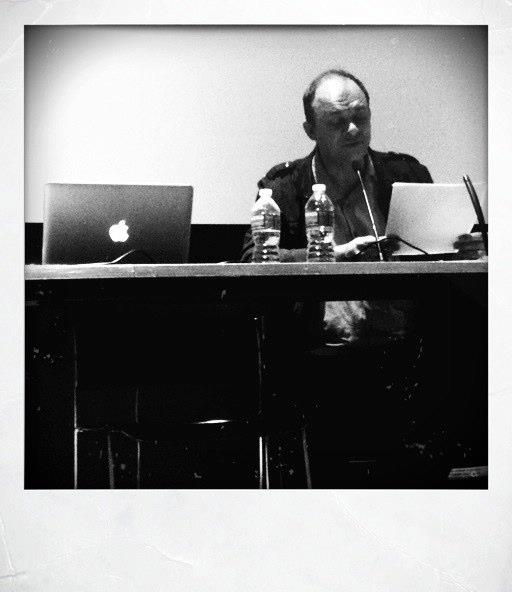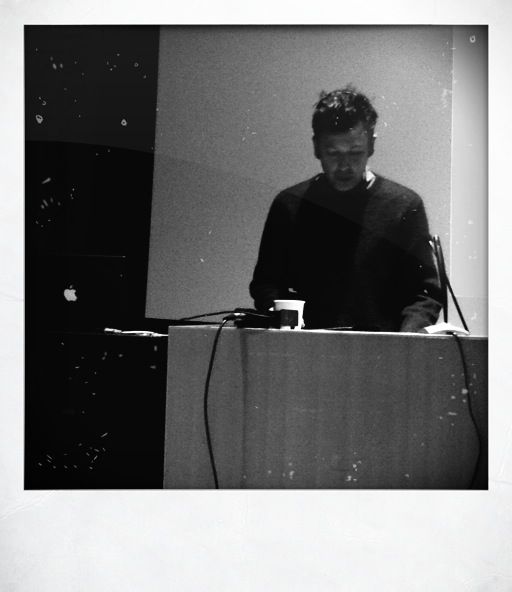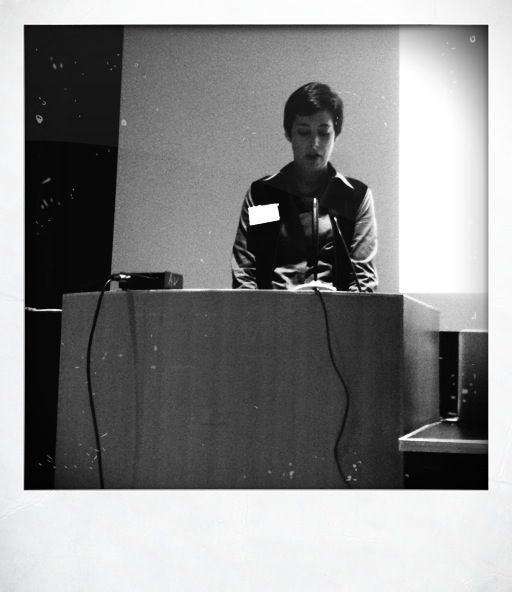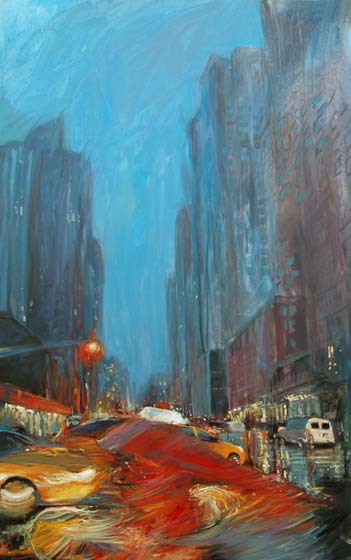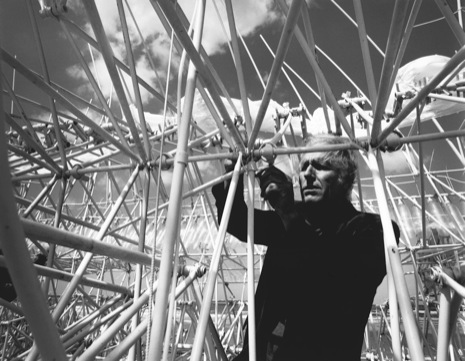 Figure 1. Dutch artist Theo Jansen on Scheveningen Beach, 2010 [photograph by Lena Herzog]
Figure 1. Dutch artist Theo Jansen on Scheveningen Beach, 2010 [photograph by Lena Herzog]
The following is a draft of an essay that will be included in a special issue of Literature Compass on “E-Medieval: Teaching, Research, and the Net,” co-edited by Orietta da Rold and Elaine Treharne, and forthcoming later this year.
Everything We Think Can in Principle Be Thought By Someone Else: A Plea for Open Scholarship
At the end of my working day, I am almost always depressed. Mine is not a straight path like an engineer’s, it’s not A to B. I make a very curly road just by the restrictions of goals and materials. . . . Everything we think can in principle be thought by someone else. The real ideas, as evolution shows, come about by chance. Reality is very creative.—Theo Jansen, creator of the Strandbeests
Although it often feels otherwise, we do not think alone. We never have. Every second of every day, there is a virtual crowd inside of our head, multiple voices, all vying for attention, and even as babies we come into this world carrying the histories of previous generations and their experiences inside intricate chains of nucleic acids that inhabit every cell of our bodies. I’ve long ago given up on the idea of a unified, autonomous “self” [thank you, Derrida, Foucault, Francesco Varela, Andy Clark, and also Katherine Hayles], but every day, our particular and unique minds touch reality and become real, to paraphrase the political philosopher George Kateb [“The Idea of Individual Infinitude,” The Hedgehog Review 7.2 (2005): 42–54, at 49], while at the same time that “reality” represents, to cadge from Timothy Morton, an inescapable “mesh”: “a complex situation or series of events in which a person is entangled; a concatenation of constraining or restricting forces or circumstances; a snare” [Oxford English Dictionary]. I agree with Morton that “everything is interconnected” and therefore “there is no definite background and . . . no definite foreground” [The Ecological Thought, p. 28]. But as Morton also asks,
If there is no background and therefore no foreground, then where are we? We orient ourselves according to backgrounds against which we stand out. There is a word for a state without a foreground-background distinction: madness. [The Ecological Thought, p. 30]
The fact of the matter is, in order to guard against this “madness,” we imagine all sorts of background-foreground distinctions all of the time: we need them, and they are necessary, even consoling, fictions. A life has to be livable, after all. I feel the same way about love: I know I’m making this up as I go along with a lot of props from others in history who have also been making things up as they go along. The trick is not to stop believing in individual lives, or in love, or even persons, but rather, to generously expand our conceptions of what counts as a life, what counts as loveable, what counts as a person. The ultimate aim is to work toward increasing, as much as is in our power, the general well-being of as many inhabitants [animate, inanimate, whathaveyou] of this world as possible. Or as Pablo Neruda once put it, much more eloquently than I ever could, “I don’t know who you are. I love you. I don’t give away thorns, and I don’t sell them” [Love Sonnet LXXVIII].
Take the Dutch artist Theo Jansen who makes, or engineers, kinetic sculptures called “strandbeesten”: the term “beest” is important here because, for Jansen, these are living creatures or “animals.” Jansen is the subject of an article in this week’s New Yorker, “The March of the Strandbeests” [5 Sep. 2011: 54-61], and for over 21 years now, Jansen, 63 years old, has devoted himself to making these “beests,” primarily out of PVC tubing and other materials, such as recycled plastic bottles and nylon zip strips. The beests are wind-powered, enabling them to walk, for example, along the beach [go HERE for videos of Jansen’s sculptures in motion; I find myself watching these videos over and over again, they are so beautiful and mesmerizing]. According to the author of the New Yorker piece, Ian Frazier, Jansen is “secretly a landscape artist” and his strandbeests are just “decoys to get us to notice the dunes, sea, and sky” [p. 61], and it’s true that when Jansen first started making these “machines” — “skeletons,” as Jensen puts it, that are “able to walk on the wind” — that he engineered them to push the sand around and thereby help bolster the threatened, eroding dunes of the Holland coastline.
But this description of Jansen’s “creatures” also belies so much of what Jansen himself says about his work that is not included in the New Yorker article — that as it progressed, he realized he was making a “new kind of life” [some might call it “passive robotics”] and that his work also represented “research into the roots of life.” Of his first prototypes, now decrepit and stowed away in a barn, he refers to them as being in their “catacombs,” and he has also invented creative titles for the “eras” of evolutionary development his beests have gone through: the Gluton Period (1990-91) for the earliest period when his beests were held together with tape, the Chorda Epoch (1991-93), and so on. Of his ongoing work in making the creatures, he says, “they give me . . . a place in the world and a way of living, and I give them life, so we both need each other. In fact, I couldn’t live without them anymore. I think that’s what you call symbiosis.” Jansen also hopes that the beesten will outlive him: “What I’m doing now is training these animals to survive on their own. . . . It’s a thought which makes me quiet — when I die, I will be living for some time on. Of course this is a utopian thought. It’s a fairy tale, something to look forward to, [but] with a lot of roots in reality as well, because some things, um, succeed” [quoted in the documentary Strandbeesten, dir. Alexander Schlichter, 2008]. […]

